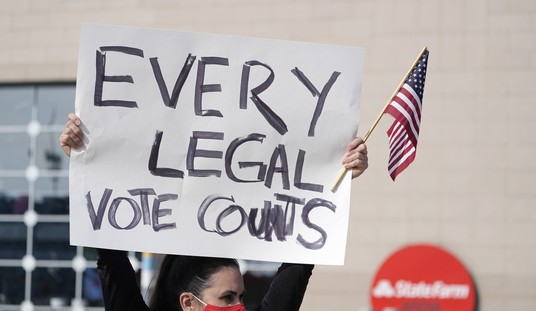TURKEYTOWN, Pa. -- Just as you crest the hill heading east along the Glades Pike highway, a red, white and blue "Drain the Swamp" sign sits on the well-manicured lawn of a sprawling home in Turkeytown, a Western Pennsylvania town likely named for the abundance of wild game in the region.
A year ago, a Donald Trump-Mike Pence sign sat in just about the same place at the same house.
A few miles down the road, a tricolored green, blue, and orange sign in front of a shuttered business bears a simple message in Arabic, Spanish and English: "No matter where you are from, we're glad you're our neighbor."
As the signs show, sometimes it's hard to pinpoint exactly where Pennsylvania is politically. Is it still solidly for President Trump, as the first sign suggests? Or is the energy brewing for progressives strong enough to upend the Republican Party's majority in the state's congressional delegation, as the third sign suggests?
From the outside, the political class has essentially seen the Keystone State as a reliable blue state, an assessment largely based on its six-cycle streak of voting for the Democratic presidential nominee.
It is a totally fair assessment.
Why Democrats didn't carry Pennsylvania in 2016 came down to tiny details. Essentially, the state's political composition has been subtly changing since 1996.
Even while Democrats were winning at the top of the ticket, down-ballot, the state has gone from solid blue to solid red in the state legislative bodies and the congressional delegation. Republicans currently hold 13 of the state's 18 congressional districts.
Recommended
But the Democrats are far from extinct. They hold the governor's office; they also hold one Senate seat and all of the row offices on the state level, despite two of the previous three row-office holders, both Democrats, going to jail in the past few years.
Kyle Kondik, managing editor of the Sabato's Crystal Ball publication at the University of Virginia Center for Politics, says there is an argument to be made that Pennsylvania makes a fairly decent microcosm of where the country stands right now in terms of who holds the power in government -- and it's a decent bellwether by which to gauge next November's midterm elections.
In short: As goes Pennsylvania's sentiments, so goes the majority of the House in the 2018 midterms.
First, some background: Outside of two instances in modern history, presidents always lose House seats in their first midterms; it is a brake-pedal reaction to whatever the party in power has been doing in the first two years.
And, for the first time in a very long time, Pennsylvania is expected have four open contests in the state: seats held by Republicans who have vacated due to retirement (Rep. Charlie Dent), scandal (Rep. Tim Murphy), presidential appointment (Rep. Tom Marino) or seeking higher office (Rep. Lou Barletta).
All of this makes for the perfect window into what might be going on in the rest of the country.
"There are a lot of elements of Pennsylvania's congressional districts that show up nationally," said Kondik. "First of all, Republicans drew the Keystone State map to favor their party, which was true in many other key states across the country. Not all, but many, particularly across the Rust Belt."
It is a 13-5 Republican majority that has held up in three straight House elections. But none of those elections had a strong Democratic tide. That tide seems likely to come in 2018.
"The president's party often struggles in midterm elections," Kondik explained, "particularly a party led by an unpopular president, as Donald Trump is, at least at the moment."
Ultimately, one would expect that Democrats would have to chip away at the big GOP congressional majority in Pennsylvania to win the House back.
The key for Democrats is to make some of these GOP-held seats more winnable with moderate Democrats who reflect the moderate attitudes and values of the districts. It is a key that is challenging for a party agonizing over its identity and fractures.
Are they a big tent? Do they give room for anti-abortion and pro-gun candidates to compete for these seats? Certainly, doing so would make the races more winnable. Then again, if a wave comes, ideology becomes secondary.
Tom Davis, former Virginia congressman and National Republican Congressional Committee chairman, has noted the increasing tendency for House elections to be more "parliamentary," meaning that the personal attributes of the candidates may matter a little bit less than they used to as they are replaced by big-picture national forces and partisanship.
"If we see that kind of dynamic next year, and if Democrats have the wind at their backs, it's possible that solidly left-of-center Democratic candidates could get elected in places where one might not expect," Kondik says. "With all that said, I certainly think it would be wise for Democrats to try to find candidates who can tack to the center in some of these Republican-leaning districts and are at least moderate on core social issues, like abortion and gun rights."
A lot can happen between now and next November. But if there is one place to watch in order to see what the trends are, it's the Keystone State.

























Join the conversation as a VIP Member